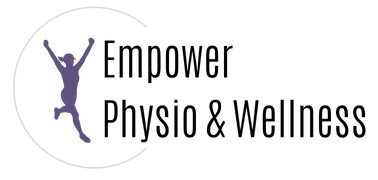Finding a healthy way to manage stress is super important. Why? Because one constant in life is that you will always encounter stressors. But how you respond is the most important part. This is where your true power lies. When you internalize stress, it gets stored in the body–most commonly in the muscles of the neck, shoulders, hips, low back, and pelvic floor. If you feel constant tension in these areas, chances are you may not be processing stress well. I’m here to help by sharing how to reduce stress and tension, the right way!
By acknowledging what’s causing you stress, processing it, and moving on, you can stop discomfort before it happens. I’ve got two tried and true methods that I share with my clients to help free them of tension.
Diaphragmatic breathing
Diaphragmatic breathing is slow, mindful belly breathing. It’s a quick way to hack your nervous system and physically shift it into “rest and digest” mode (aka parasympathetic nervous system dominance).
When to perform: Practice this during a stressful moment or before bed to help your body and mind relax.
How to perform:
- If it is safe to do so, close your eyes.
- Inhale through your nose to a count of 4.
- Exhale through your mouth to a count of 8.
- Repeat for 5 breaths if you’re in a stressful moment, or practice for 5 minutes if you are relaxing before bed.
Brain dumps
Your brain is constantly processing information and thoughts. This is necessary to be a functioning human, however, sometimes your brain gets stuck in a thought-processing loop.
You may notice this more when you’re trying to relax or fall asleep. Ever felt like your brain couldn’t shut off? Or you wake up in the middle of the night and pick up right where you left off, thinking about everything again.
Brain dumps help close the loop. A brain dump involves writing everything you’re thinking down on paper. By writing it down, your brain is able to productively process your thoughts. It’s equivalent to checking something off of your to-do list–it’s done and super satisfying! Writing down your thoughts takes a load off your brain. It opens up space for thoughts that better serve you and allow you to relax.
When to perform: Practice this before bed, or another time of the day that works best for you. For best results, incorporate brain dumps on a daily basis.
How to perform:
- Get a piece of paper or open up a new page in your journal.
- Set a timer on your phone for 5-10 minutes, put it on do-not-disturb, then set your phone to the side so it doesn’t distract you.
- Write down what you’re thinking, stream of consciousness.
Sounds simple, right? It may be more challenging than you think but keep in mind: BE KIND TO YOURSELF. Judging yourself looks like this: “[X] happened today and I’m so stressed. That’s so stupid of me to be stressed. It’s so dumb I’m making a big deal out of this. Ugh, I suck.”
Instead, practice compassion and curiosity, which looks like this: “[X] happened today and I’m feeling stressed. Hmm, I wonder why I’m feeling stressed. What is really bothering me about this situation? I’m doing the best I can and know that this is a learning opportunity. I got this.”
Allow yourself to really feel what’s going on. Feeling the yucky allows you to feel the happy even more genuinely. When your timer goes off, you can be done, but don’t let that limit you. You can keep going if it feels good to do so. After you complete the brain dump, you can tear up the paper, shred it, or keep it in your journal or a folder to look back on later if you like.
Bonus exercise
If you loved the brain dump exercise and want to learn how to reduce stress and tension further, try this bonus exercise. The things you think about right before falling asleep get processed by the brain and incorporated into our memory and subconscious, so why not hack the system?
After your brain dump and before you fall asleep, think about what your ideal life is like. This needs to be genuine and not forced. For example, if you want to get back to exercising but a current pain or injury is getting in the way, visualize yourself completing your favorite workout. Tell yourself, “I am strong. My body is resilient. My body can heal.”
Give these exercises a try and let me know how it goes in the comments!
I hope you’ve learned how to reduce tension and stress in a healthy way. If you want to come up with a customized plan to effectively process your stress, let’s chat.



